Our Project Journey
TU (Hmawbi)
Electrical Power Engineering
Project Showcasing
Soil Moisture Sensor
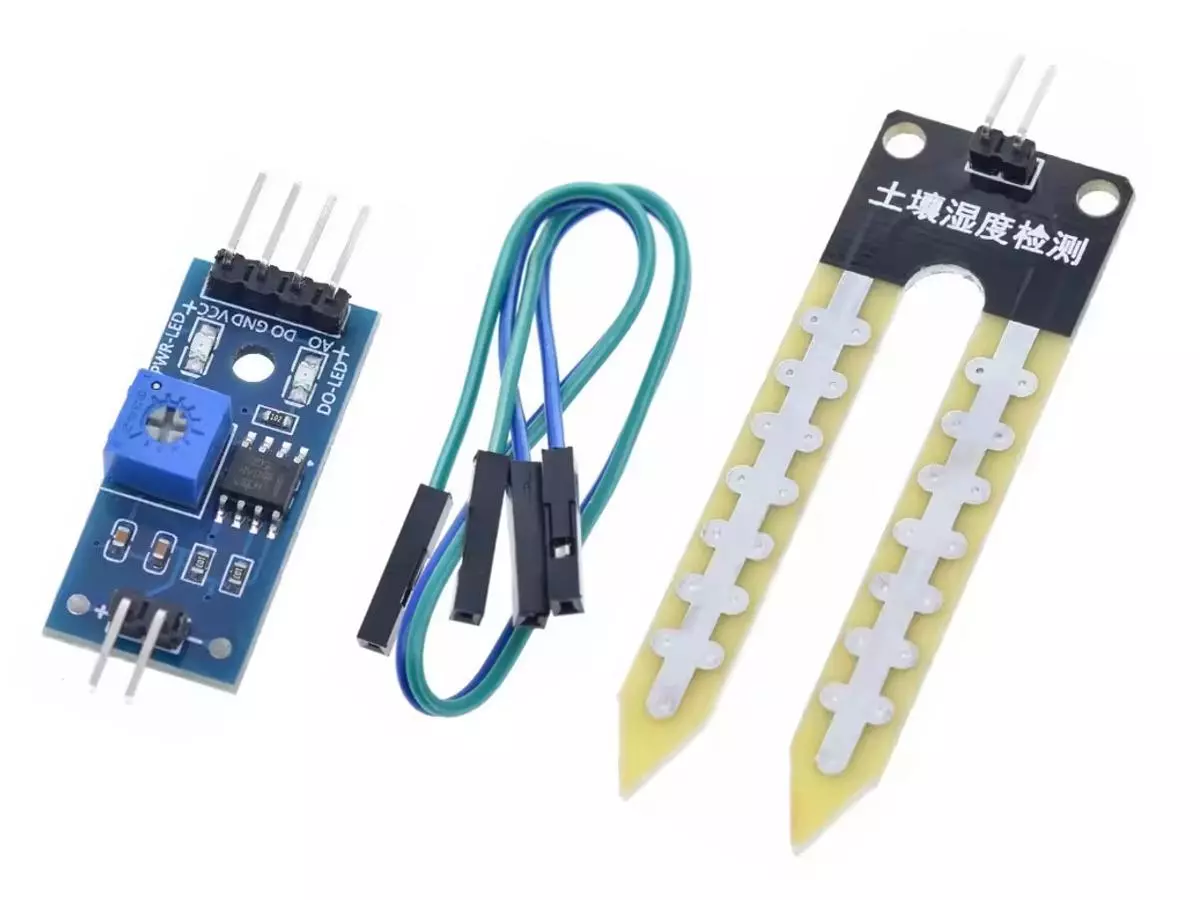
The Soil Moisture Sensor Module is used to measure the amount of
water (moisture) present in the soil. It helps determine whether the
soil is dry, moist, or wet. This information is important for
automatic irrigation systems in greenhouses, as it ensures plants
get the right amount of water — not too much and not too little.
This electronic component is used to measure the water content in
soil or other similar media. It has two large prongs that are
inserted directly into the soil.The sensor works by measuring the
electrical conductivity between the two conductive strips on the
prongs. More water in the soil means higher conductivity, and the
sensor outputs a different electrical signal. This signal can then
be read by a microcontroller, like an Arduino, to determine how wet
the soil is.
Connection of Soil Sensor and it’s Circuit Board
This device is made up of two main pieces that work together to check how much water is in the soil. The first part is the fork-shaped probe which has two metal lines on it. This part is placed directly into the dirt or plant pot. The second part is the electronic module, which is a small green circuit board. This board reads the signal from the probe and converts it into a usable number. The board usually has a small blue knob, called a potentiometer, that lets you adjust the water level that triggers a signal. This sensor is commonly used in smart gardening to build simple systems that water plants when the soil gets too dry.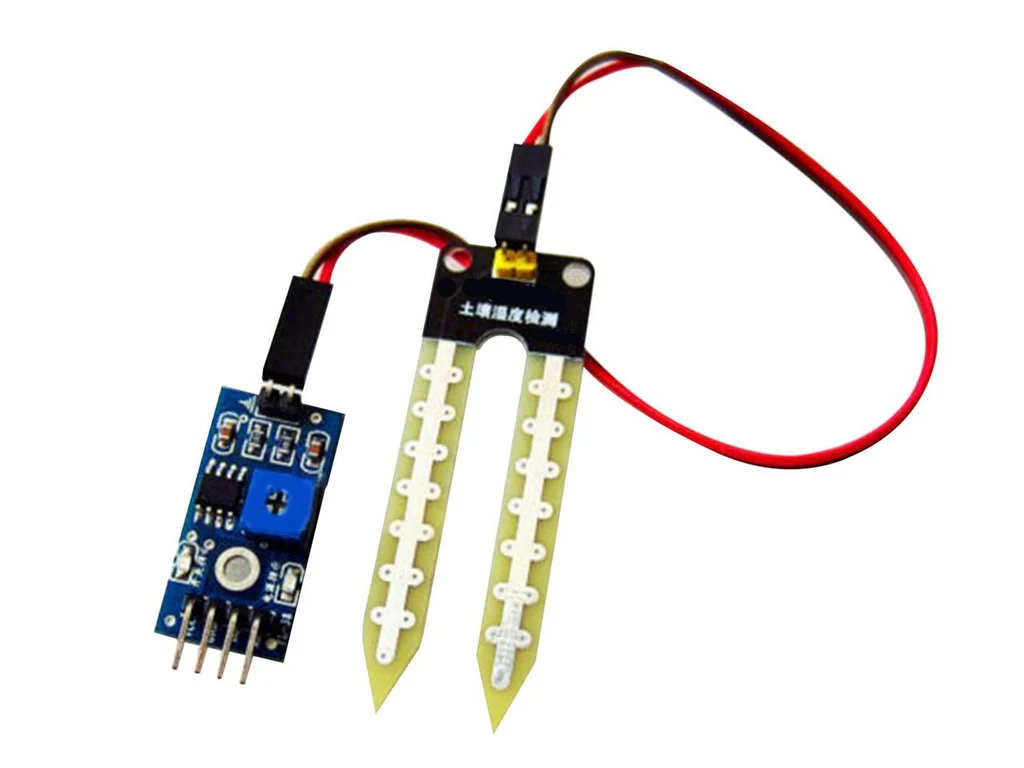
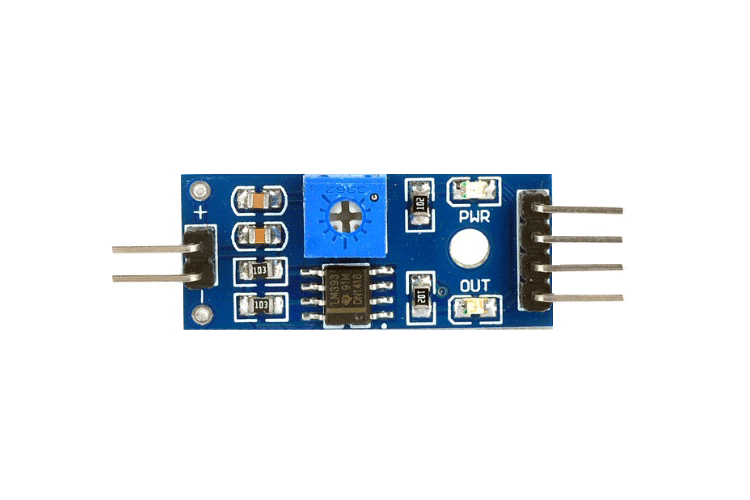
Circuit Board of Soil Moisture Sensor
This small circuit board is the control unit for the soil moisture sensor probe seen in the previous image. The board has the electronic parts needed to read the signal from the probe and convert it into a useful output. It features a blue potentiometer, which is a small adjustable dial, that allows the user to set a specific threshold for moisture. When the soil moisture crosses this set point, the board can provide a digital output. It also includes an integrated circuit, usually a comparator chip like the LM393, to handle the signal comparison. This module is essential for making the soil probe functional with microcontrollers like Arduino.Components of the Sensor
The module mainly consists of two parts :
(a) Probe (Soil Moisture Sensor)
1. The probe is made of two conductive metal rods (usually copper or stainless steel). 2. It is inserted into the soil, and it measures the resistance or conductivity between the two rods. 3. When the soil has more water, it conducts electricity better (low resistance). 4. When the soil is dry, it resists electricity (high resistance).(b) Electronic Module (Control Board)
1. The probe is made of two conductive metal rods (usually copper or stainless steel). 2. It is inserted into the soil, and it measures the resistance or conductivity between the two rods. 3. When the soil has more water, it conducts electricity better (low resistance). 4. When the soil is dry, it resists electricity (high resistance).
Working Principle
When the probe is inserted into the soil :
Wet soil → more conductivity → lower resistance → higher analog output voltage. Dry soil → less conductivity → higher resistance → lower analog output voltage. The control board reads this data and sends the signal to a microcontroller (like Arduino). Based on the reading, the system can turn on or off a water pump automatically.
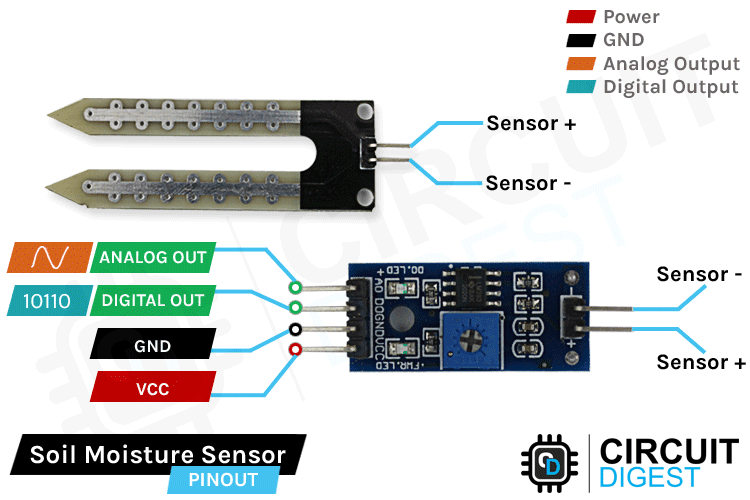
Advantages :
1. Provides real-time soil moisture levels for better irrigation control. 2. Prevents overwatering and saves water. 3. Affordable and easily available in local markets. 4. Can be easily connected with Arduino or other control systems. 5. Enables automatic irrigation systems in greenhouses.
Disadvantages :
1. The metal probes can corrode over time, especially in wet soil. 2. Frequent exposure to moisture shortens its durability. 3. Requires regular calibration for accurate readings. 4. Soil with high salinity may affect accuracy.
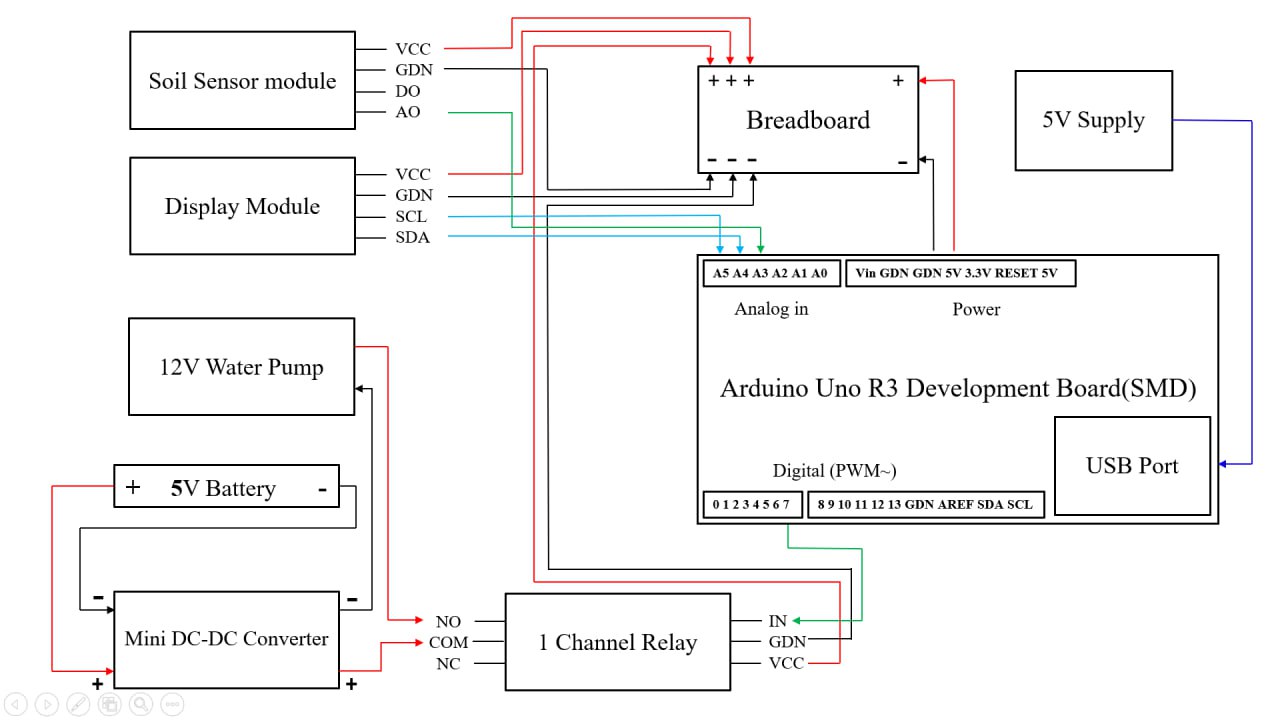
Fig : Circuit Diagram of Smart Irrigation System
Power Supply
1. The main 5V Supply connects to the Arduino Uno R3 board's USB Port with a blue wire to power the microcontroller. 2. The Arduino provides power to the Breadboard, connecting its 5V pin to the positive rail and the GDN pin to the negative rail. 3. The Soil Sensor Module's VCC and GDN pins are powered from the Breadboard's positive and negative rails using red and black wires. 4. The Display Module's VCC and GDN pins also connect to the Breadboard power rails for their operation. 5. A separate 5V Battery connects its positive terminal to the positive input of the Mini DC-DC Converter. 6. The 5V Battery's negative terminal connects to the negative input of the Mini DC-DC Converter.
Sensor and Display Connections
1. The Soil Sensor Module's DO (digital output) pin
connects directly to the Arduino's Digital Pin 8
with a black wire.
2. The Soil Sensor Module's AO (analog output) pin
connects to the Arduino's A0 analog input pin with
a green wire.
3. The Display Module's SCL and SDA pins connect to the
Arduino's A5 and A4 analog pins, respectively, for data
communication.
Pump Control Connections
1. The 1 Channel Relay's VCC and GDN pins are powered
by connecting to the Arduino's 5V and GDN pins.
2. The Relay's IN (input) pin connects to the Arduino's
Digital Pin 7 with a green wire to be controlled by
the program.
3. The positive output of the Mini DC-DC Converter connects
to the positive terminal of the 12V Water Pump.
4. The negative output of the Mini DC-DC Converter connects
to the COM (common) terminal of the 1 Channel Relay.
5. The negative terminal of the 12V Water Pump connects to
the NO (normally open) terminal of the 1 Channel Relay
with a red wire.
Circuit Diagram of Smart Irrigation System
1. A Soil Sensor Module is used to measure the
moisture level of the soil.
2. The system is built around an Arduino Uno R3
which processes the sensor data and controls the pump.
3. The Soil Sensor provides both a digital and
an analog signal to the Arduino for flexibility
in measurement.
4. The Display Module is connected using the two wires
communication standard on pins A4 and A5.
5. A dedicated 5V Battery is used to power the high voltage
12V Water Pump circuit separately.
6. A Mini DC-DC Converter is necessary to boost the
5 volt battery voltage up to 12 volts for the pump.
7. A 1 Channel Relay is used as an electrically controlled
switch to turn the Water Pump on or off.
8. The Water Pump is connected to the Normally Open (NO)
terminal of the relay meaning the pump is off by default.